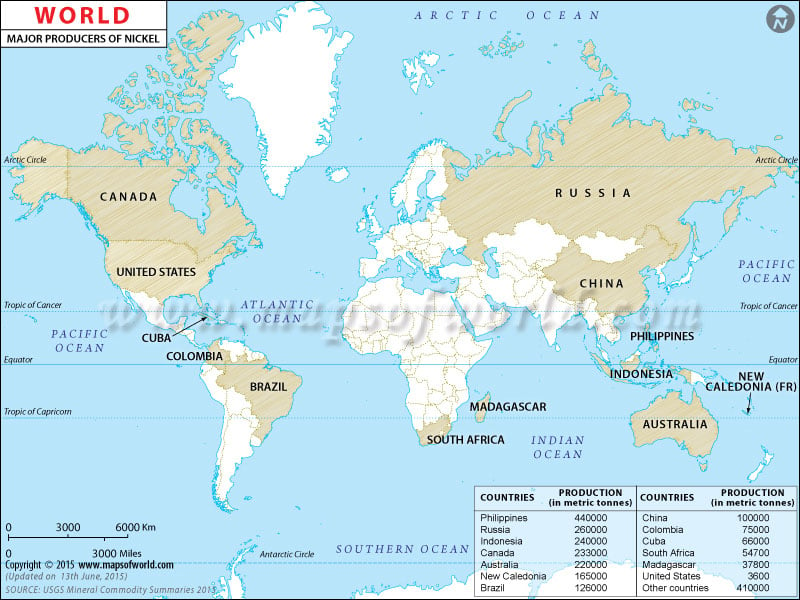The biggest market that trades in nickel is London Metal Exchange (LME).Commonly found in iron meteorites, Nickel is a silvery-white lustrous metal with a slight golden tinge.
Hard and ductile, resistant to corrosion, low conductivity, and many other characteristics make copper useful in the production of industrial and consumer products such as stainless steel, magnets, batteries, coinage, and electric guitar strings.
Nickel is used in many alloys including nickel brasses and bronzes, and alloys with copper, chromium, aluminium, lead, cobalt, gold, and silver.
Nickel is one of the five ferromagnetic metals present on earth with Cobalt, Iron, Gadolinium and Dysprosium.
The World Map – Nickel Producers Map shows a list of the countries that produce the largest quantities of nickel.
As the data in the map shows, Russia is the largest nickel-producing nation in the world. In 2011, the country producing 280000 metric tonnes of nickel.
The world consumption level of nickel is around 1.15 million tons. Countries of the European Union and Japan are the largest consumers of nickel in the world.
Philippines is the second-largest nickel producer in the world followed by Indonesia, Canada, Australia, New Caledonia, Brazil, China, Cuba, Colombia, South Africa, Botswana, Madagascar, and Dominican Republic.
World Nickel Mine Production 2014
(in metric tonnes of Nickel Content)
| COUNTRY | Mine Production (2014) |
|---|---|
| Philippines | 440000 |
| Russia | 260000 |
| Indonesia | 240000 |
| Canada | 233000 |
| Australia | 220000 |
| New Caledonia | 165000 |
| Brazil | 126000 |
| China | 100000 |
| Colombia | 75000 |
| Cuba | 66000 |
| South Africa | 54700 |
| Madagascar | 37800 |
| United States | 3600 |
| Other Countries | 410000 |
Source: USGS Mineral Commodity Summaries 2015
http://minerals.usgs.gov/minerals/pubs/mcs/2015/mcs2015.pdf

